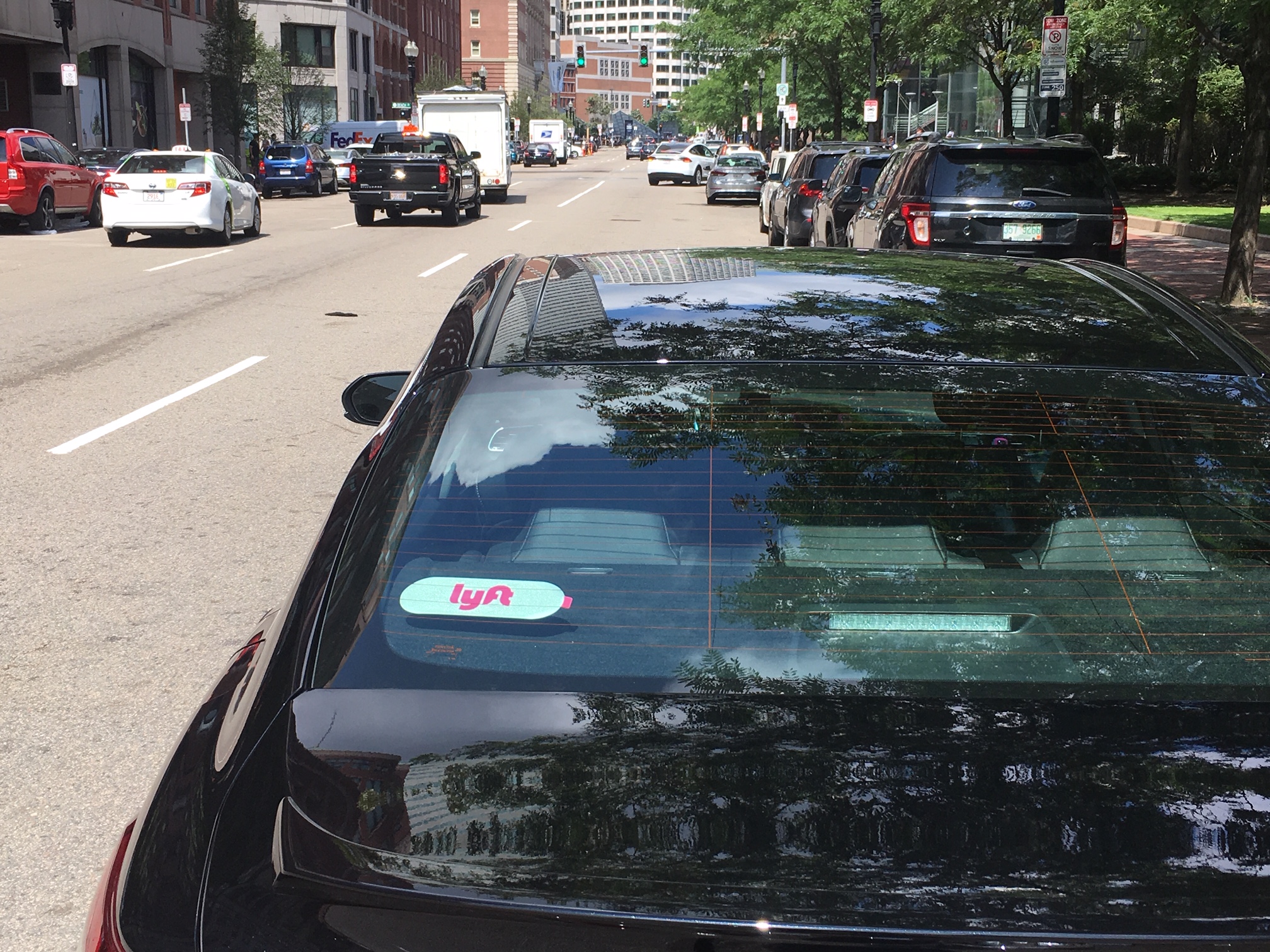Uber and Lyft have finally come clean: Their drivers are causing a significant share of the congestion in America's most transit-dense cities, particularly in Boston.
A new study jointly commissioned by the two app-based cab companies found that they have a massive footprint in San Francisco, Washington and Boston, but the companies are affecting traffic to a lesser degree in Chicago, Seattle, and Los Angeles, where private car ownership is much higher.
Both companies have experienced explosive growth in the past decade but haven't acknowledged how much congestion they've caused in America's cities — until now.
Transportation consultants Fehr & Peers analyzed the companies' proprietary data on vehicle miles traveled for ride share companies as well as private and commercial vehicles in six cities over the course of one month: September 2018. The authors call it a "high-level exercise" that helps both companies understand how they contribute to congestion and "help them form appropriate narratives for both internal and external communication."
In other words, this is part of a public relations effort - but the companies’ marketing departments will have a hard time putting a positive spin on the study's results for the extremely congested Boston region.
According to the companies' own data, Uber and Lyft drivers logged a staggering 23 to 25 million miles (the equivalent of roughly 50 round-trips between the Earth and the moon) a quarter of the distance between the Earth and the sun) in the city of Boston in September 2018 alone.
That represents about 8 percent of the city's estimated total traffic:

While that mileage is for the entirety of Suffolk County, it's likely that most of those miles are concentrated in much smaller areas. In a Medium post, Chris Pangilinan, Head of Global Policy for Public Transportation, wrote that nearly a quarter of Uber's mileage in the city of Boston is concentrated in the city's transit-rich downtown, Chinatown and Back Bay neighborhoods.
For all its staggering numbers, the study leaves out a lot of information. It doesn't address the companies' effects on traffic over time or how many trips they shift away from public transit. And the focus on mileage traveled statistics pointedly does not measure how much congestion the companies' drivers cause while they are not moving, but are instead waiting near congested curbs on the city's busiest streets.
While both companies have zealously guarded their ridership data, other traffic analysts have sought to provide a clearer view of their influence.
For instance, Schaller Consulting found in 2018 that private ride share vehicles accounted for a 180 percent increase in driving on city streets and that 60 percent of ride share users would have taken public transit or walked or biked if the vehicles weren't available to them. And another independent study earlier this year found that ride hail companies made up more than half of San Francisco's 62-percent jump in weekday traffic delays between 2010 and 2016.
Alison Felix, a Senior Transportation Planner at the Metropolitan Area Regional Council, was a contributor to the MAPC's 2018 "Share of Choices" report, which made its own estimates of impacts from Uber and Lyft, which planners refer to as "transportation network companies" (TNCs). She says that the new statistics from this memo are illuminating, but they also point to a need for more open data-sharing between TNCs and governments.
"More granular data will provide a better understanding about shared trips and the relationship between TNCs and public transit – neither of which is addressed in the memo," wrote Felix in an email message.
She also took note of the study's high estimates of how much mileage Uber and Lyft drivers rack up without any passengers. In the memo, the study's authors distinguish between "phase 1" mileage, when drivers are waiting for a fare, "phase 2" mileage, when drivers respond to a ride request and drive to pick up a passenger, and "phase 3" mileage, when drivers are actually transporting passengers to their destination.
In the 4-county Boston metropolitan region (which encompasses Suffolk, Norfolk, Middlesex and Essex counties), Uber and Lyft drivers drove between 20 million and 26 million miles without any passengers in the month of September 2018 - nearly as much driving as they did with passengers.

Felix suggests that one way to reduce this wasted mileage, and the associated congestion and pollution it creates, would be for the state to impose higher fees on Uber and Lyft when their drivers aren't carrying passengers. Boston Mayor Marty Walsh recently testified in favor of a new bill, H.1067, that would charge the companies 20 cents for each mile they drive without passengers during peak hours.
CityLab reported that the companies, which have since gone public this spring, are being more transparent because they are looking to shape the public debate over congestion pricing, a policy that could lead to more people choosing Uber and Lyft rides instead of driving themselves into cities in their own vehicles.
Uber and Lyft's strategy for the future will be to acknowledge a role in creating more traffic in downtown areas, with plenty of supporting evidence, while vociferously blaming the bulk of congestion on commercial trucks and families who choose to drive their own car over taking transit.
"The research shows that despite tremendous growth over the past decade, [Uber and Lyft] use still pales in comparison to all other traffic, and although [Uber and Lyft] are likely contributing to an increase in congestion, its scale is dwarfed by that of private cars and commercial traffic," Pangilinan wrote in his Medium post.
That may well be true. But Mayor Walsh and legislators on Beacon Hill may find that it will be easier to introduce a form of congestion pricing that's targeted on two large Silicon Valley companies before they start charging congestion fees on ordinary Bay State motorists.






